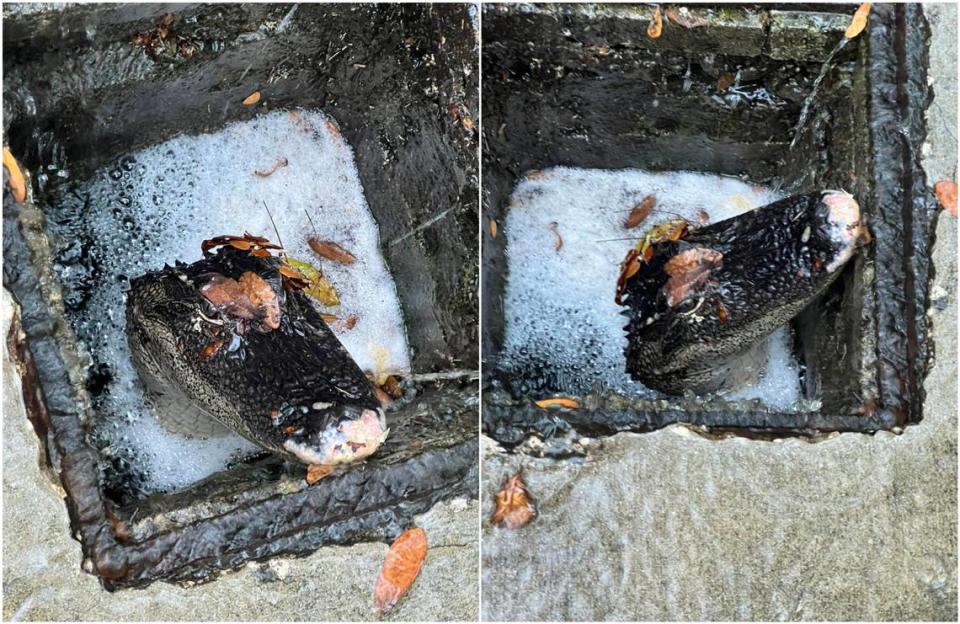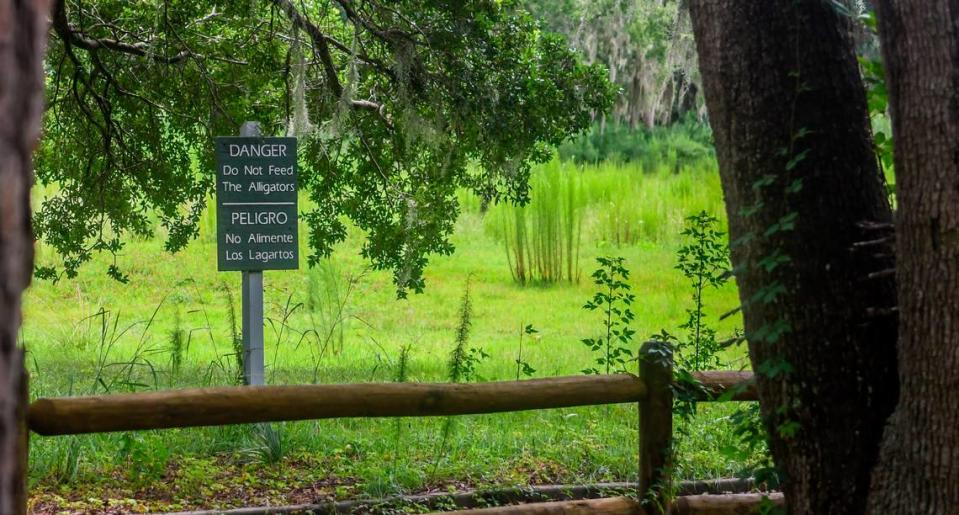After months of being trapped underground in a prolonged hibernation, this Hilton Head alligator was finally able to stretch its legs.
The 6-foot-long alligator had been stuck in a small drainage pipe since October, when Port Royal Plantation residents first spotted its snout through the roadside grate on South Port Royal Drive. Matt Kraycar, owner of Bluffton-based K&K Wildlife Services, rescued the animal from its loneliness in the rainwater Thursday morning. Despite moderate injuries, the alligator was released into a Hilton Head lagoon and is expected to make a full recovery.
“I’ve had them in drain pipes before, but I’ve never seen one in such a small pipe,” Kraycar said. “It was just a 12-inch pipe and the body of it was kind of smashed in there.” He suspected the alligator got stuck in the canal after making a sharp turn, preventing its long body from turning back.
Neighbors on South Port Royal Drive checked the drain occasionally after their first sighting in October and saw the alligator only occasionally, Kraycar said. They called the animal removal company Wednesday evening when they realized the animal was trapped.
After removing the metal grille, Kraycar was able to pull the alligator to freedom with a catch pole, a human restraint device that can be tied and secured around an animal’s neck. The rescue was completed at 11 a.m. Thursday and took about 10 minutes of pulling. He said, “I shook him back and forth to get him completely out of bed.”

The freed alligator did not appear malnourished, Kraycar said, but the firm pressure appeared to have rubbed some of its skin down to the bone. He released the reptile on a shoreline about 50 yards away and captured its long-awaited return to Hilton Head Lagoon.
“He staggered away a bit, but alligators are so strong – I don’t think he’ll have any problems,” Kraycar told The Island Packet and Beaufort Gazette. He wasn’t sure if the animal was male or female, but estimated it was at least six years old.
How did the alligator survive in the drain?
Kraycar said the captured alligator could have fed on small fish in the drain water during its five-month stay in the pipe. Yet alligators have remarkably slow metabolisms and can fast for months, sometimes years.
The species’ biological clock also came in handy. Every winter, alligators undergo hibernation, a five-month dormant state similar to hibernation that allows cold-blooded creatures to endure cold and freezing temperatures. The animals’ heart rate and metabolism decrease dramatically, allowing them to conserve energy and survive on little to no food.
“It might not have been a bad time for this to happen,” Kraycar said, noting that the alligator got stuck in the drain about a month before the typical start of hibernation in November. “It probably went in and out of (dormant periods), which kept it healthier instead of starving there in the summer.”
This situation is not uncommon for the Lowcountry’s apex predators. Kraycar estimates that his company removes about one alligator per year from local drainage systems, which can be connected to water reservoirs the animals call home.
Gators may follow fish into the pipes, Kraycar said, or others might seek refuge from cold weather in the fall and winter. K&K Wildlife saw a spike in the number of alligators captured after Hurricane Matthew, when flooding and irregular water flow forced many of the animals into storm drainage systems. While some were rescued, other large alligators were found dead in the water pipes.
The incidents represent a clash of sorts between human development and alligator populations in the Lowcountry, where residents have long debated how to coexist with the animals. More than 100,000 members of the once-endangered species live in South Carolina, with the vast majority in coastal areas.








